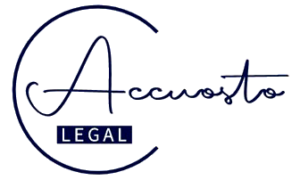Rose-scented tyres, tennis balls smelling of freshly-cut grass, darts smelling of beer… Although it may seem like, this is not science fiction, as we are talking about brands.
The title of this article is only a small humorous reference to the content which is about nothing other than scent trademarks.
Graphic representation of a brand
In Spanish legislation, it is an essential requirement that the sign is capable of being ‘graphically represented’. In Spain, as in most countries of the European Union, this poses a major obstacle for the existence of scent trademarks.
Graphical representation is every ‘figure, image or idea in writing which replaces the real thing’. Consequently, in order for a scent trademark to gain access to the registry, one of the above listed items should be able to represent it. In many countries, this is not exactly the case.
What happens in other countries?
In some countries you can register scent trademarks (smells, aromas or fragrances), although they are not exempt from the debate on the possible ways of representing them.
As with any other brand, in the case of scent trademarks it is necessary to prove that the brand is eligible for registration.
The requirements that have to be met by a scent trademark in the United States and the United Kingdom are:
• That the brand applicant is the only person who sells the goods marked with this brand
• That the fragrance is not an inherent attribute or natural characteristic of the goods but, rather, a feature provided by the brand applicant
• That the brand applicant has released the scent trademark in his advertising.
• That the brand applicant has demonstrated that customers, traders and distributors of his products have come to recognize it as the source of these goods.
In Australia, it is understood that an aroma’s ability to distinguish a scent trademark’s goods or service is evaluated by using the same criteria as in the case of any other brand, in other words, determining whether other traders would want or need to legitimately use the aroma in their normal course of business.
However, not all types of aromas are suitable for distinguishing. We should point out the following:
• The natural aroma of a product, for example, perfumes and essential oils.
• Masking scents, whose purpose is functional and lacks any distinctiveness.
• Aromas that are functional or common in different sectors, for example, the smell of lemon in cleaning products which is used to make the product more pleasant or attractive.
There are wide differences in trademark laws as to the means which are considered allowable for the graphical representation of scent trademarks.
In most countries, some type of graphical representation of scent signs is required. However, it is difficult to determine whether a written description can meet this requirement.
Sieckmann Criteira
Immediately following the case Ralf Sieckmann v Deutsches Patent-und Markenamt (12th Dec.02), resolved by the European Communities Court of Justice (ECJ), the question was considered as to whether the graphical representation requirements of a scent trademark were satisfied when reproducing the aroma through other means.
Specifically taken into account were 1) by means of a chemical formula, 2) through a description, 3) by means of a sample or, 4) through a combination of all these.
The ECJ ruled, with regard to the chemical formula, that few people would admit that such a formula bears any relation to the smell to be registered. Because a chemical formula does not represent the smell of a substance, but the substance itself, it does not constitute a sufficiently clear and accurate representation of the brand. In addition, the description of the scent itself is not sufficiently clear, precise and objective. Employing a scent sample is not a graphical representation and also lacks the necessary stability and durability.
Based on the above, the following criteria were established for graphical representations of scent trademarks:
1) it must be ‘accurate’ so as to define the brand and determine the scope of protection
2) it must be ‘clear’ for both the authorities and the public
3) it must be ‘complete, easily accessible and intelligible’ in the registry
4) it must be lasting’ throughout the validity of its registration
5) it must be ‘objective’ so as to avoid any doubt in the sign’s identification.
Currently there is no internationally accepted classification of fragrances of a general character which allows the identification in an objective and precise way, like with international colour codes or musical notation, of a fragrance by allocating a name or specific code.
As a result of the ‘Sieckmann criteria’, scent trademarks are no longer accepted for registration or are difficult to register in several countries where previously registration of such brands was allowed.
Double standards – unanimity of criteria?
Nevertheless, this must be weighed up against the EJC’s Judgment Shield Mark BV (27th Nov.03) which sustains that a stave is easily accessible on the understanding that it meets the requirements of graphic representation.
So, simply with the intention of stimulating debate, we ask ourselves: Why cannot the description of a smell be considered accessible in intelligible language or through the representation of a chemical formula? Both are equally difficult to interpret and are expressed with the same level of clarity and precision.
In fact, there are specialists that identify and measure smells who will give (as happens with winemakers and wine) clear, precise and objective descriptions, leaving in no doubt that the arguments of the ECJ to refuse registration of a brand for lack of graphical representation are insufficient.
These days, when our modern society is in constant evolution and innovation, the Trademark Law should respond to new types of brands, such as scent trademarks (among others), and therefore benefit traders and consumers.
Jordi Farré


